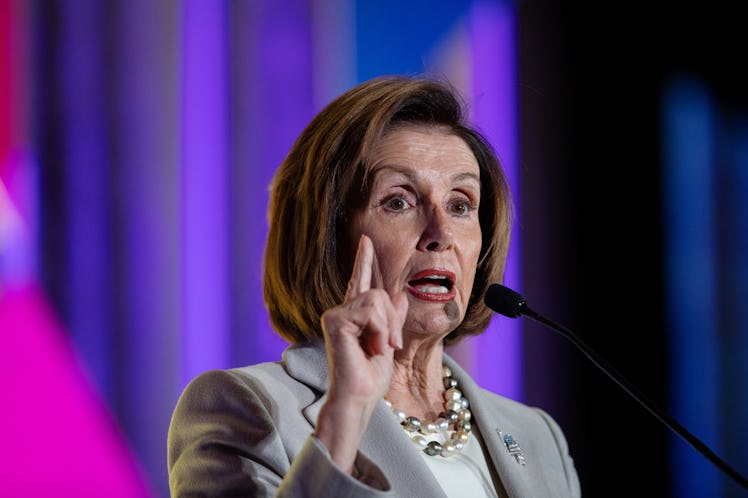
The House Voted To Formalize Its Impeachment Inquiry Into Trump, So What's Next?
On Oct. 31, the House of Representatives took its first formal steps to move forward in the impeachment process against President Donald Trump. With a 232 to 196 majority, the House voted to formalize its impeachment inquiry into Trump in order to make the impeachment process more public and transparent. Ahead of Thursday's House impeachment vote, the House Rules Committee released a resolution on Oct. 29 detailing how the impeachment inquiry would proceed. The formalization of the impeachment inquiry is one of the first steps in the long road to impeachment.
What does it mean to formalize an impeachment inquiry? For starters, it is not a vote on whether or not to actually impeach a president. Instead, it is a procedural vote on the ground rules for how the impeachment process will work moving forward. More specifically, the House voted on the instructions detailed by the House Rules Committee's Oct. 29 resolution, which called for public hearings and a continuation of ongoing investigations. The resolution also described how these hearings and investigations should work, and the House's vote on the resolution was its first formal vote in the impeachment process.
This resolution came on the heels of demands for more openness and transparency during the impeachment process. According to NBC News, Democrats faced growing pressure to hold public hearings with key witnesses in the Trump-Ukraine scandal, and the resolution addressed that pressure with a template for how these public hearings would operate.
According to Vox, Thursday's vote marked a shift from the closed-door depositions that Democrats have organized in recent weeks to a more public process. However, the vote was also symbolic, because neither the law nor the Constitution dictates that the House must have a full floor vote before proceeding with an impeachment inquiry. This had been a major point of contention for Republicans ahead of Thursday's vote. In fact, the White House sent a letter to House Speaker Nancy Pelosi Oct. 8 insisting that the Trump administration would not cooperate with the impeachment inquiry, on the grounds that it was "constitutionally invalid" without a House majority vote. This is not true, but as Vox pointed out, Republicans can no longer use this argument as fodder to protest the impeachment inquiry.
Before the vote, members of the House participated in a debate about the resolution, during which Republican leaders such as House Minority Leader Kevin McCarthy slammed Democrats for prioritizing impeachment over other things. House Minority Whip Steve Scalise, meanwhile, suggested that Democrats were resorting to "Soviet-style" methods in proceeding with the impeachment inquiry. Despite this pushback from the GOP, however, the House still managed to achieve a majority vote to formalize the impeachment inquiry into Trump.
Now that the impeachment inquiry has been formalized with a House vote, the inquiry will proceed as directed by the House Rules Committee resolution. California Rep. Adam Schiff, the chair of the House Intelligence Committee, will take on a leadership role in the next phase of the impeachment inquiry. The resolution states that his committee will be responsible for holding public hearings and then sending a report on them to the House Judiciary Committee. The Judiciary Committee will then write up articles of impeachment, and the process will continue from there. The House vote on whether or not to impeach Trump is still far in the future at this point, but Thursday's vote set the gears in motion, and the public will be hearing a lot more about impeachment moving forward.